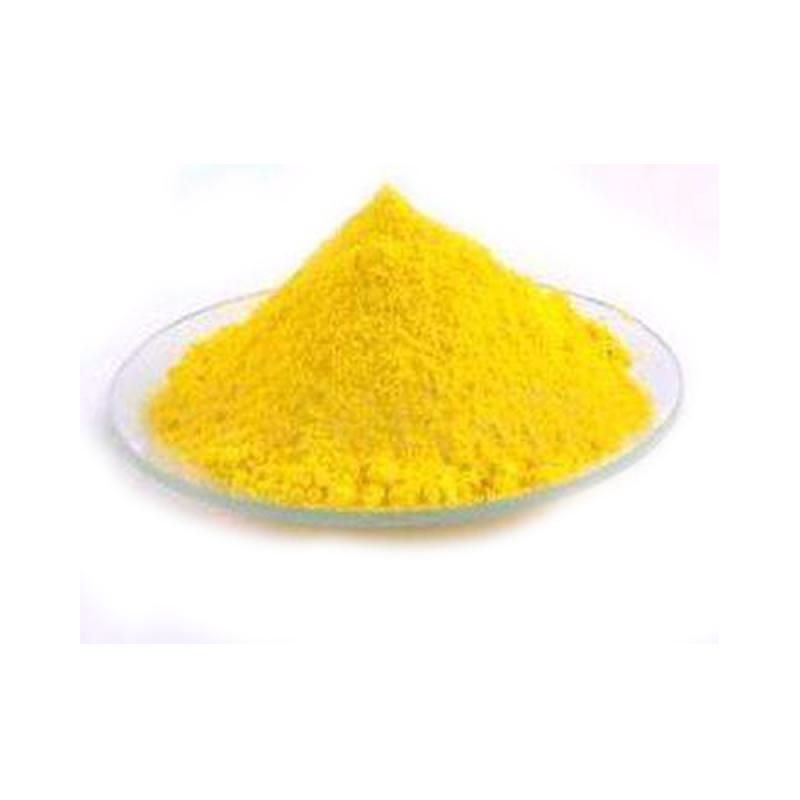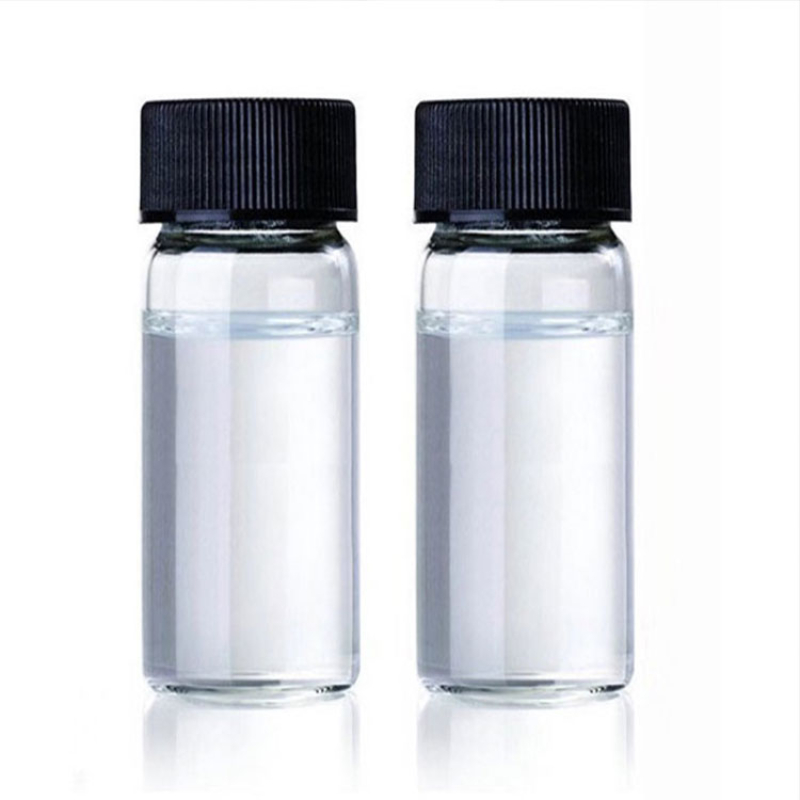Products Description of Polyethylene Glycol CAS#25322-68-3Polyethylene glycol is referred to as "PEG". It is a high molecular weight compound formed by intermolecular dehydration condensation of ethylene glycol. Chemical formula HOCH2(CH2OCH2)nCH2OH. Where n is greater than 4. Average molecular weight 200-7000. The number after the commercial polyethylene glycol indicates the average molecular weight. For example, polyethylene glycol-400 means that the average molecular weight of the commercial polyethylene glycol is about 400.Colorless viscous liquid or white solid.
Contact Now
Products Description of 4,5-epoxytetrahydrophthalic acid diglycidylester CAS#25293-64-5Colorless liquid4,5-epoxytetrahydrophthalic acid diglycidylester Chemical PropertiesBoiling point 447.4±45.0 °C(Predicted)density 1.406Factory and Equipment ShowFast delivery timeInventory 2-3 working days New production 7-10 working days
Contact Now
Glacial Acetic Acid (Ch3cooh) - CAS#64-19-7Product Description:Welcome to our comprehensive page dedicated to Glacial Acetic Acid, a key chemical compound with the chemical formula C2H4O2 and globally recognized by the CAS#64-19-7.
Contact Now
Products Description of Hexachloroethane CAS#67-72-1Colorless needle-shaped orthorhombic crystals with a camphor-like aroma.
Contact Now
Products Description of Diethyl Sebacate CAS#110-40-7Colorless to slightly yellow liquid with aroma of wine, fruit and melon. Boiling point is 302~C, melting point is 1~3℃.
Contact Now
Products Description of 2,4,5-Trimethoxybenzaldehyde CAS#4460-86-02,4,5-Trimethoxybenzaldehyde is mainly used to prepare asarone. α-Asarone is mainly found in the volatile oils of natural products such as Acorus calamus. It has sedative, prolonged hypnotic and antibacterial effects. It is clinically used to treat mental illnesses such as chronic bronchitis, epilepsy, and coma.
Contact Now
Heptane CAS# 142-82-5N-Heptane is a flammable liquid, current in crude oil and extensively used in the auto- cell industry. For example, as a solvent, as a fuel knock trying out standard, as automobile starter fl uid, and paraffi nic naphtha. n-Heptane motives unfavourable fitness results in occupational workers, such as CNS depression, skin irritation, and pain.
Contact Now
Products Description of 4,4'-Diamino-2,2'-Stilbenedisulfonic Acid CAS#81-11-8 4,4'-diaminostilbene-2,2'-disulfonic acid, an organic chemical substance, molecular formula: C14H14N2O6S2.4,4'-Diamino-2,2'-stilbenedisulfonic acid Chemical PropertiesMelting point 300 °Cdensity 1.4732 (rough estimate)vapor pressure 1.3hPa at 25℃refractive index 1.6510 (estimate)storage temp. Keep in dark place,Inert atmosphere,Room temperaturesolubility Aqueous Base (Slightly)pka-1.58±0.50(Predicted)form Crystalline Powdercolor Cream to yellow
Contact Now
Products Description of Palmitoylethanolamide (PEA) CAS#544-31-0Palmitoylethanolamide (PEA) is an endogenous fatty acid amide that belongs to the class of nuclear factor agonists.
Contact Now
Products Description of 1-Phenylpiperazine CAS#92-54-61-Phenylpiperazine is a chemical1-Phenylpiperazine Chemical PropertiesMelting point 18.8 °CBoiling point 286 °C(lit.)density 1.062 g/mL at 25 °C(lit.)refractive index n20/D 1.588(lit.)Fp >230 °Fstorage temp. 2-8°Csolubility Insolubleform LiquidpkapK1:8.71(+1) (25°C,μ=0.1)Specific Gravity1.062 (20/4℃)color Clear colorless to yellowWater Solubility InsolubleBRN 132157CAS DataBase Reference92-54-6(CAS DataBase Reference)NIST Chemistry ReferencePiperazi
Contact Now
Products Description of Choline chloride CAS#67-48-1Choline chloride was developed by the Agricultural Technology Institute of the Ministry of Agriculture, Forestry and Fisheries of Japan in 1964, and registered as a plant growth regulator in 1987. It also became vitamin B4. Common choline chlorides on the market are divided into plant-carrier choline chloride and white carbon black (silicon dioxide) as a carrier choline chloride. my country's production is about 400,000 tons, accounting for more than 50% of the global production capacity.
Contact Now
Products Description of Diethyl Ethoxymethylenemalonate CAS#87-13-8Ethoxymethylene, also known as diethyl ethoxymethylenemalonate, is a colorless, transparent and viscous liquid. It is an important pharmaceutical intermediate and is widely used in the synthesis of medicines, pesticides and auxiliaries.
Contact Now
Products Description of Melamine CAS#108-78-1Melamine, commonly known as "melamine", "protein essence" and "melamine (Pinyin: mì'àn)", is a triazine nitrogen-containing heterocyclic organic compound, often used as a chemical raw material. It is a white monoclinic crystal, almost odorless, slightly soluble in water (3.1g/L at room temperature), soluble in formaldehyde, acetic acid, hot ethylene glycol, glycerin, pyridine, etc., insoluble in acetone and ethers, harmful to the body, and cannot be used in food processing or food additives.
Contact Now
Chlorobenzene CAS# 108-90-7Chlorobenzene is a monocyclic fragrant compound with one hydrogen atom on the benzene ring substituted with one chlorine. It is produced by means of chlorination of benzene in the liquid segment with a catalyst. Chlorobenzene is a colourless, flammable liquid with a candy almond-like odor, at ambient temperature with a incredibly excessive vapour pressure, reasonable octanol-water partition coefficient (log 2.8) and average to low water solubility (497.9 mg/L @ 25℃).
Contact Now
Products Description of Lithium hydride CAS#7580-67-8Lithium hydride, also known as lithium monohydride, is an inorganic compound with the chemical formula LiH. It is the hydride of lithium and is a white crystalline powder. It is insoluble in benzene and toluene, but soluble in ether.
Contact Now
Products Description of Hydrogenated castor oil CAS#8001-78-3Castor oil is flammable but not inflammable, almost insoluble but soluble in ethanol, slightly soluble in aliphatic hydrocarbons, and castor oil is slightly volatile, so be careful when storing it.
Contact Now
Product Description: USP 99.7% Glycerine (CAS# 56-81-5)Our premium USP 99.7% Glycerine (CAS# 56-81-5) is a high-purity, pharmaceutical-grade glycerine perfect for versatile applications across a variety of industries.
Contact Now
Products Description of Eucalyptus oil CAS#8000-48-4Eucalyptus oil is one of the most commonly used essential oils. With the increasing popularity of candies and chewing gum, one of the main uses of eucalyptus oil is as a food additive. Synthetic fragrances have a refreshing and clean appeal.It has a great influence on the cosmetic industry (such as toothpaste and oral hygiene products) and other household cleaning products industry, as well as the fragrance of perfumes.
Contact Now
Products Description of Tetramethylguanidine CAS#80-70-6Tetramethylguanidine, referred to as TMG, is a strong organic base catalyst with a wide range of uses in industry.
Contact Now
Products Description of Oleic acid CAS#112-80-1Insoluble in water, soluble in benzene, chloroform, miscible with methanol, ethanol, ether and carbon tetrachloride. Because it contains double bonds, it is easily oxidized by air, producing an unpleasant odor and turning yellow. When treated with nitrogen oxides, nitric acid, mercurous nitrate and sulfurous acid, it can be converted into oleic acid. When hydrogenated, it becomes stearic acid. The double bonds can easily react with halogens to form halogenated stearic acid.
Contact Now
Products Description of DMI CAS#80-73-91,3-dimethyl-2-imidazolinone, also known as dimethylethylene urea, referred to as 1,3-dimethyl-2-imidazolinone, is a polar solvent with a high boiling point, Chemicalbook, It has high flash point, low melting point, extremely low toxicity, extremely low pollution and strong solubility.
Contact Now
Products Description of Tolylene-2,4-diisocyanate CAS#584-84-9Toluene-2,4-diisocyanate is a colorless, transparent liquid at room temperature and pressure, and is sensitive to moisture.
Contact Now
Products Description of Stannous chloride dihydrate CAS#10025-69-1Stannous chloride, chemical formula SnCl2, is also called tin dichloride. There are anhydrous and hydrated substances. The former is transparent crystals with a melting point of 246℃, a boiling point of 652℃, and a relative density of 3.95. It is soluble in water and oxidized in the air to form insoluble chloride oxides. It is hydrolyzed in water to form basic stannous chloride 〔Sn(OH)Cl〕precipitate.
Contact Now
Products Description of Benzalkonium chloride CAS#8001-54-5Benzalkonium chloride (BAC for short) is a quaternary ammonium salt compound. As a broad-spectrum fungicide of cationic surfactants, it can effectively control the growth of algae and slime in water, and has good slime stripping effect and certain dispersion and penetration effects. It also has certain degreasing, deodorizing and corrosion inhibition effects.
Contact Now


































